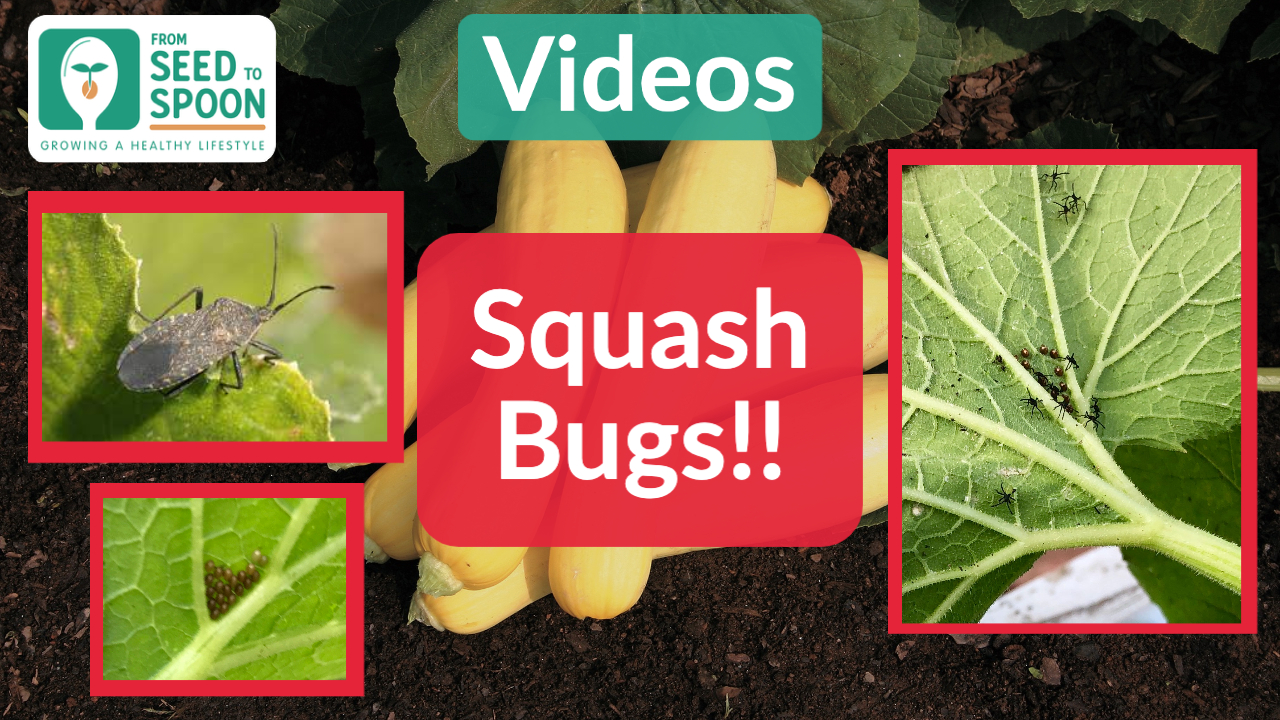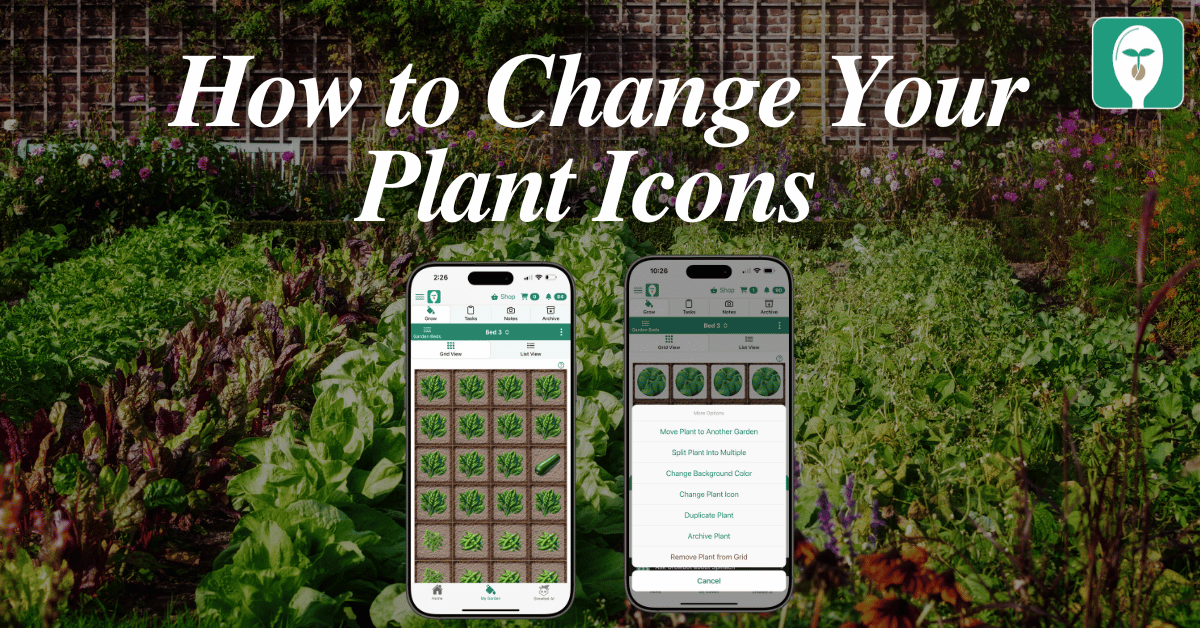Squash bugs are my nemesis in the garden! They can transfer diseases and cause your once amazing-looking squash plants to die suddenly!
Learn several tips and tricks for how to handle these nasty squash bug pests in your garden in this video!
Auto generated subtitles for video – text may be slightly off and grammar incorrect, but it’s better than nothing, right?! 🙂
Hi everybody. It’s Carrie with seed to spoon. I don’t know about you all, but we have been battling the squash bug and they are our nemesis. So I thought I would take a few minutes today to go over our top tips and tricks for both prevention and how to get rid of them.
So the very first year we grew squash in our yard. We had fantastic luck, never once saw a squash bug in sight. It was amazing. We. So many different zucchini and squashes, it was, it was great. And then the second year the squash bugs found us. So the war was on with them and they, man, once they get in there and they get established, they can be really difficult to control.
So it is super important to make sure that you are staying on top of it and know what you’re looking for and get rid of them. As soon as you see. So, first of all, what you’re gonna be looking for are on the underside of your squash leaves. There’s like little clusters of eggs and these are squash bug eggs.
And if you see them at this stage, that’s great. Get rid of them at that a at that stage. So at that point, if you see those, you’ll go through a really easy way to go about doing this is just to take some thick tape and just go up and stick it up to them and pull them all off that way. Super easy. Maybe even like a lint brush roller, things like that.
It really easy to handle them. And at that stage, and then next thing that you’ll be looking for are the nymph stage. So this is when they just hatch out of their eggs. They’re little baby squash bugs. These ones are definitely a little harder, cuz they’re moving around. But again, you want to be getting rid of these as much as possible too.
And then again, of course, if you see the adults, those ones, you definitely need to get rid. The best thing to do is prevention for squash bugs. So like I already talked about just looking out for them, looking at the underside of the leaves. We make this a daily thing. So we come outside and look underneath our squash leaves and see if we see any eggs, any signs of activity.
Things like that. And you won’t necessarily know that you have an issue until it’s too late. So it’s really important to make sure that you stay on top of it. And you’re looking every day or two, and making sure that you can find these bad guys. But if you do find them, I usually carry a bucket of soapy water with me.
So you can just handpick toss ’em in there. And one thing we’ve been doing a lot of this year to try and prevent them from getting out of control is a lot of companion planting. Now there are a bunch of different plants that are really good to deter the squash bugs. So there’s things like di parsley.
Mint is another one. That’s really good, but make sure with mint that you put it in its own little container. I try to line little tiny, like three gallon smart pots with mint around my squash plants. Also things like onions, garlic, strong scents. Marigold, nasturtiums, things like that. You can go about planting around your squashes and for more about companion planting, I’ll link to a video that I made this year about all of the best companion plants and what they do to help the squash out, all for squash.
So I will link to that video. So once you see an issue though, hand picking is going to be your number one go-to to handle these squash bugs. And like I said, carry around a bucket of soapy water. If you are having trouble finding them, or if you have a really large squash plant, something you can do is spray the plant down with some water.
And these squash bugs will all climb to the top and you will, um, be able to grab them a lot faster and easier. Also, if you have any kids hanging around, they love to go pest, hunting in the garden with me and they get a quarter for each pest that they find. So they love going to work out there. There are also beneficial that you can put to work things like the praying mantis.
These guys go around and hunt these squash bugs. So they are really good to have around and you can really encourage them to be in your garden. And we have a bunch of tips and tricks within our app. If you didn’t know, we have a beneficial section and within the app, and it’ll talk all about how to go about encouraging them.
There are also things like garlic sprays that you can use and Neme oil can also be effective too, but it’ll only be effective really for those Nim stages. Once they get to the adult size, not much in the, in the form of sprays or anything like that, we’ll do much to get to them. And also just a word of warning for the Neem oil too.
If you decide to use that, make sure that you are using it when you have temperatures below 90 degrees, or you could possibly risk suffocating your plant. And that’s definitely not something that you wanna do. So make sure that the temperatures are good before you use something like that. So I hope some of these tips and tricks have helped you to manage those squash bugs.
If you are struggling with your squash plants and your squash plant just suddenly died on you, and you did not see any of these squash bugs, it’s possible that you had these squash vine boar instead, which is different. So stay tuned for my next video to see how to handle that. Let me know if you all have any other questions or comments, leave him in the comment section down below, and I will get back with you and good luck.
Squash, bug hunting, everybody.
Learn more about growing over 100 different foods, including how to manage various pests in our FREE iOS, Android, or new Universal Web App!

Carrie Spoonemore, co-founder of “From Seed to Spoon,” stands as a beacon of inspiration for gardeners and health enthusiasts alike. Her journey alongside her husband, Dale Spoonemore, in creating a platform that demystifies gardening and promotes a healthier lifestyle, has made a significant impact on individuals around the globe. Through the “From Seed to Spoon” app, Carrie has dedicated herself to empowering people to take control of their health and environment by growing their own food.
With a profound belief in the power of gardening to improve mental and physical health, Carrie’s contributions to the Seed to Spoon blog reflect her holistic approach to wellness. Her articles often focus on the nutritional benefits of homegrown fruits and vegetables, organic gardening practices, and the mental health benefits of spending time in nature. Carrie’s expertise in health science shines through in her detailed discussions on how specific plants can contribute to a balanced diet and overall well-being.
Carrie’s passion for gardening is deeply intertwined with her commitment to family and community wellness. She frequently shares personal stories of how gardening has brought her family closer together, offering practical tips for involving children in gardening activities and making it a fun, educational experience. Her writing encourages families to explore gardening as a means of spending quality time together while learning about nature and sustainability.
In addition to gardening advice, Carrie’s contributions to the blog include insights into the use of technology to enhance the gardening experience. She has played a crucial role in designing the “From Seed to Spoon” app to be user-friendly, ensuring that users of all ages and backgrounds can navigate the complexities of gardening with ease. Her vision for the app is not just as a gardening tool but as a vehicle for change, inspiring individuals to adopt a more sustainable lifestyle by growing their own food.
Carrie Spoonemore’s presence on the blog is marked by her compassionate approach to teaching and her unwavering belief in the transformative power of gardening. Her work continues to inspire a community of gardeners to pursue a healthier, more sustainable way of living, proving that with the right tools and knowledge, anyone can become a gardener and advocate for their health and the planet.












2 thoughts on “Squash Bugs: How to Battle These Nasty Pests in the Garden!”
Nope! Not hand picking those nasty things. They smell so bad and I just can’t get over the ick factor with squash bugs. I used a cordless hand vacuum, it works fairly well but it’s not fun and neighbors probably think I’m on drugs lol
As far as using tape to remove the eggs, I’ve been extremely unsuccessful with that. It almost always rips or smashes the leaves beyond repair. In February, we Torched the old plant debris on the surface of the garden hoping to kill any squash bug hibernators. Found out I probably killed all the beneficial bugs doing that as well. Darn it! I’m considering skipping all squash bug plants this year. Not sure it’s worth dealing with the frustration or their putrid smell. There has got to be a better answer to control squash bugs. I’ve looked extensively for three years straight but haven’t found any answers besides what you talked about here.